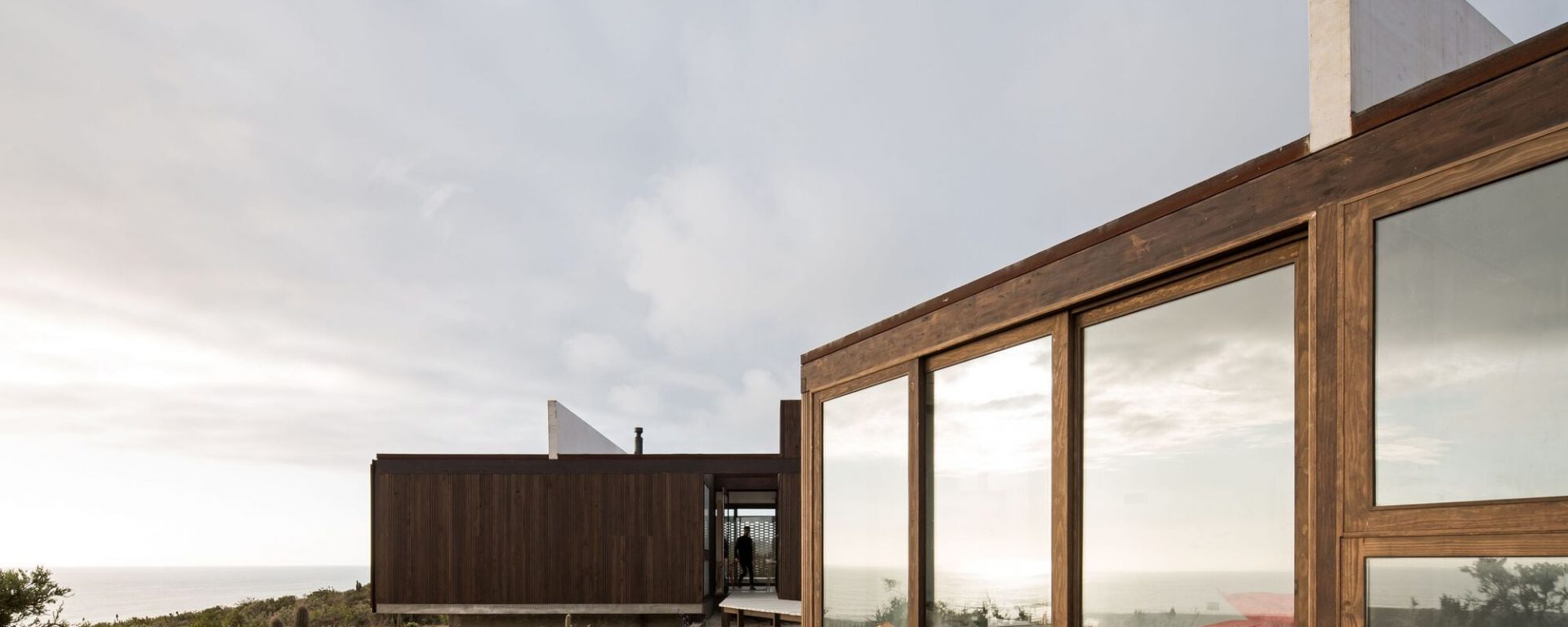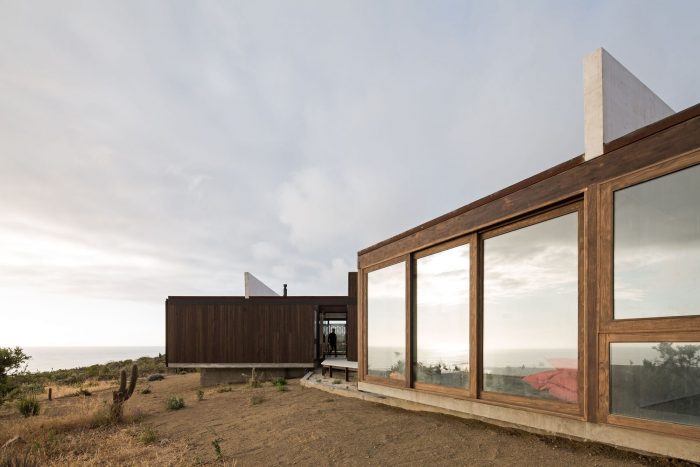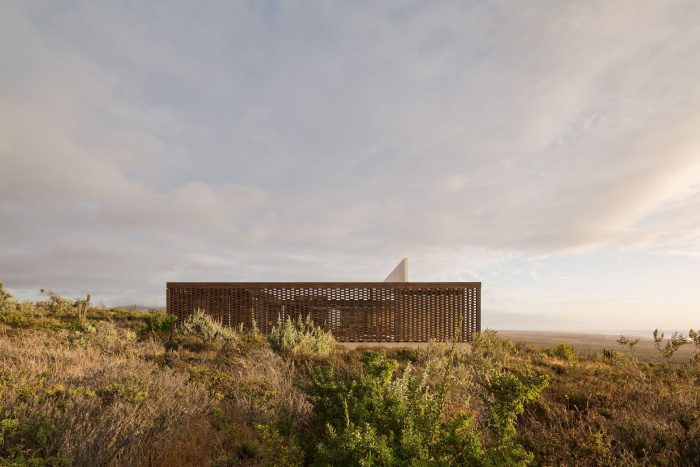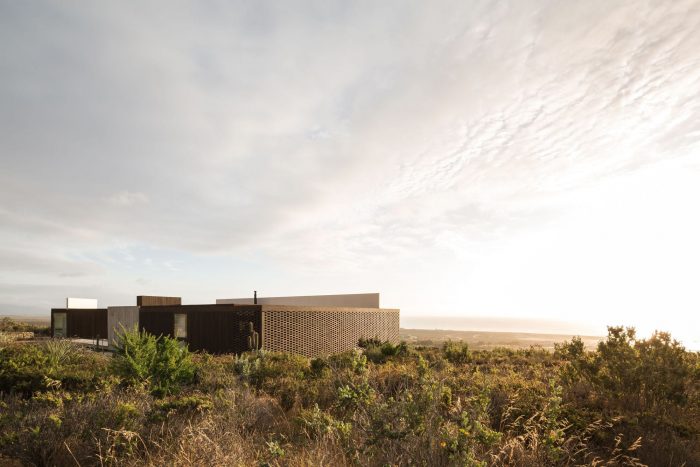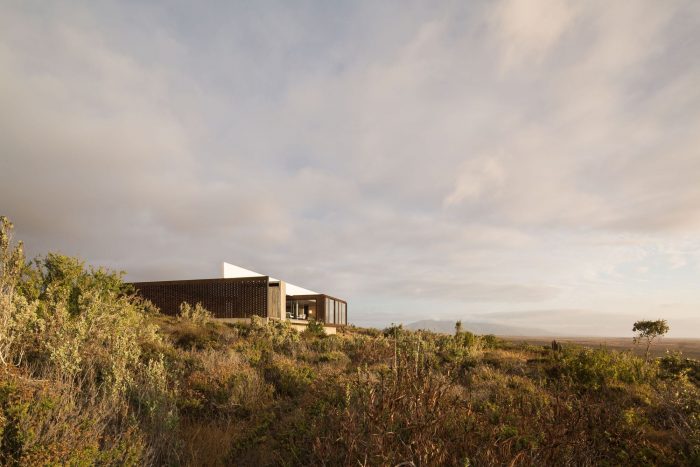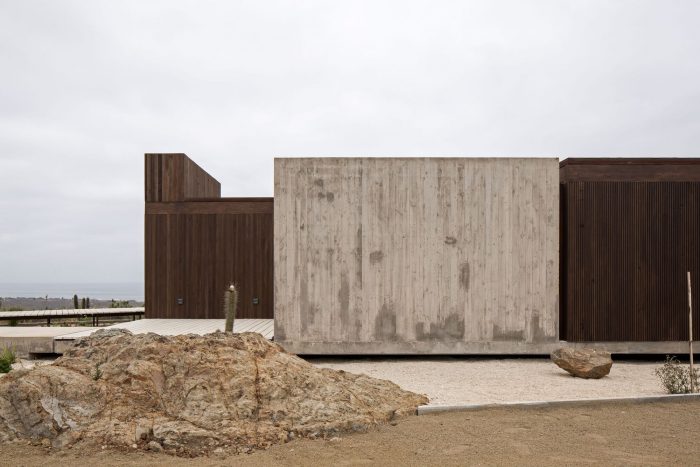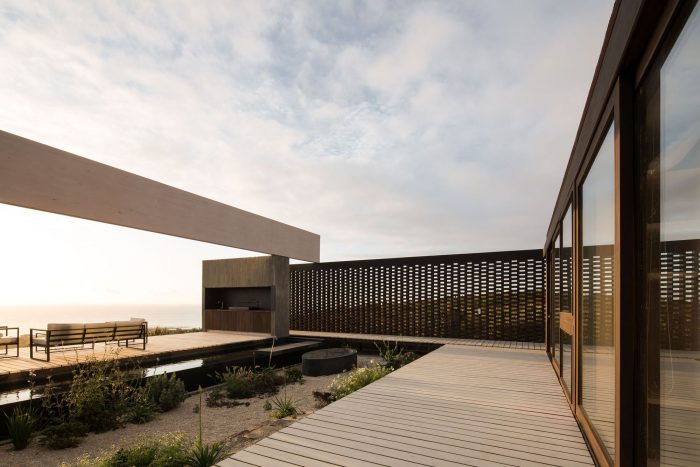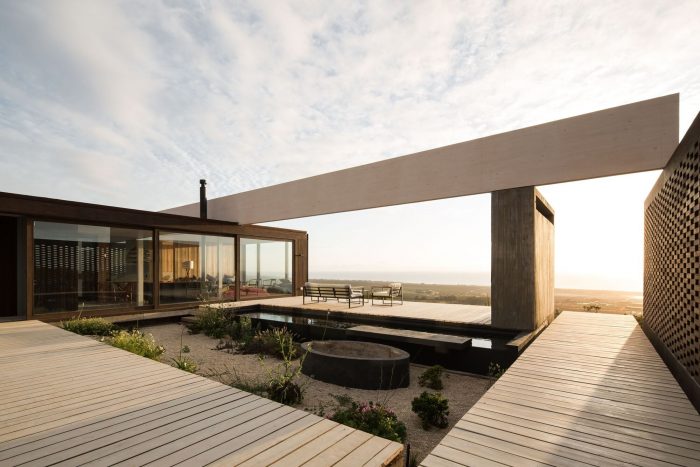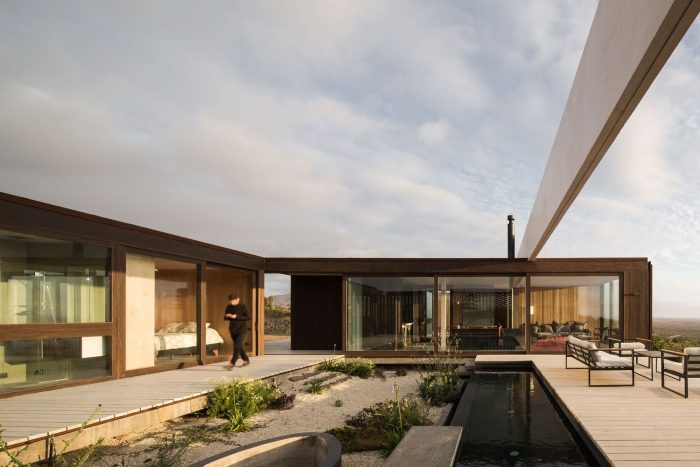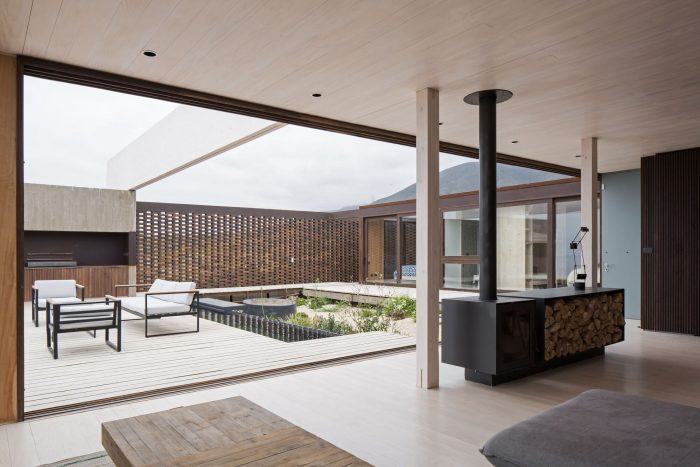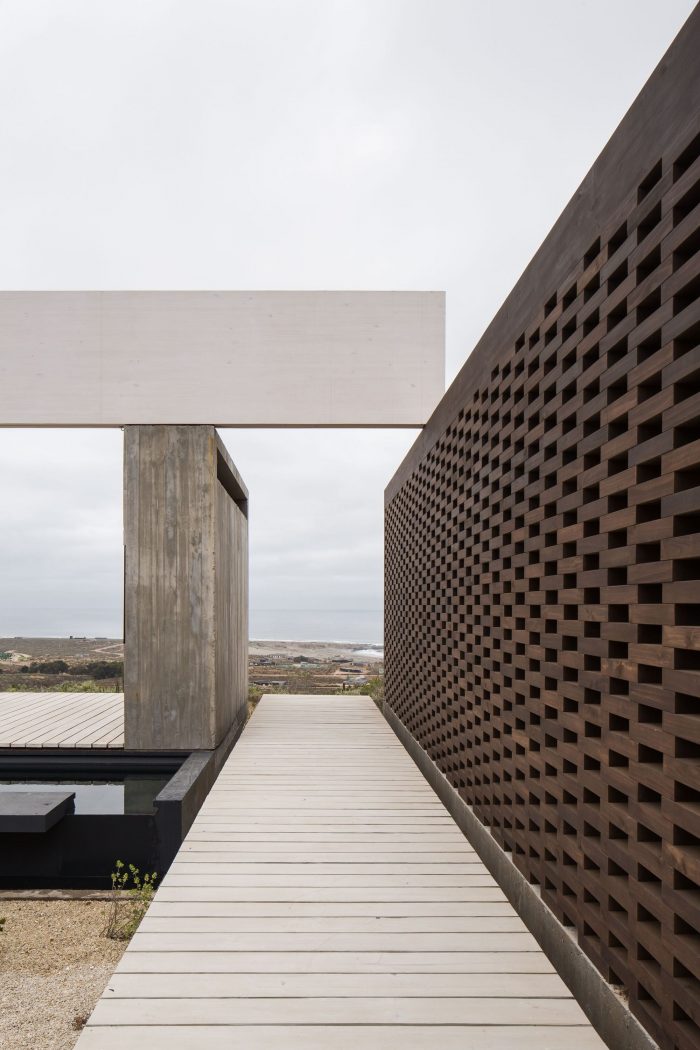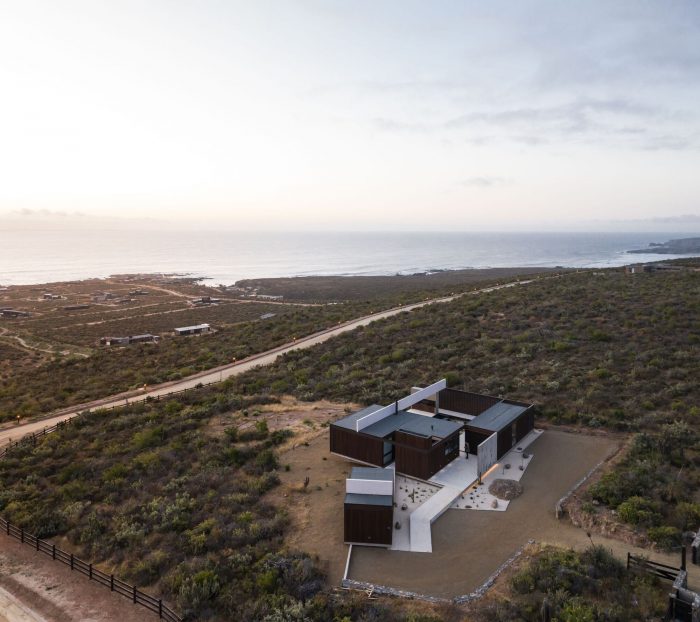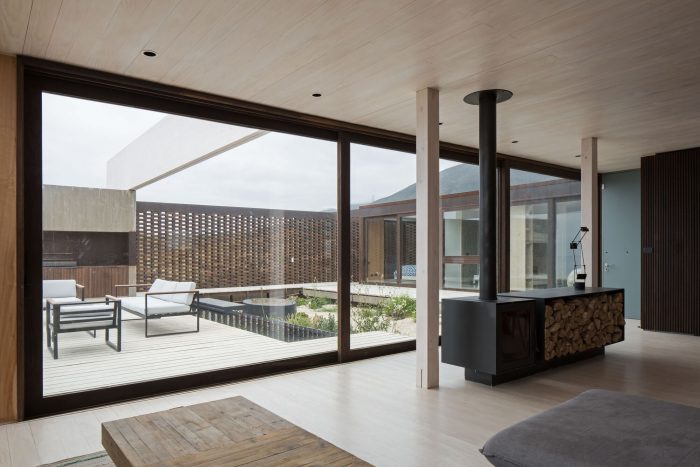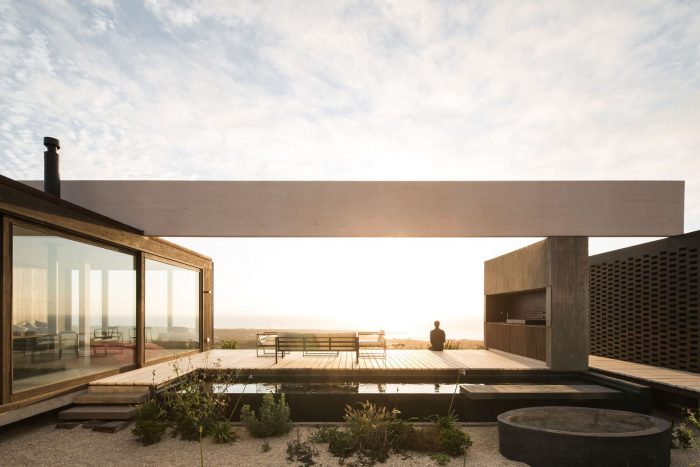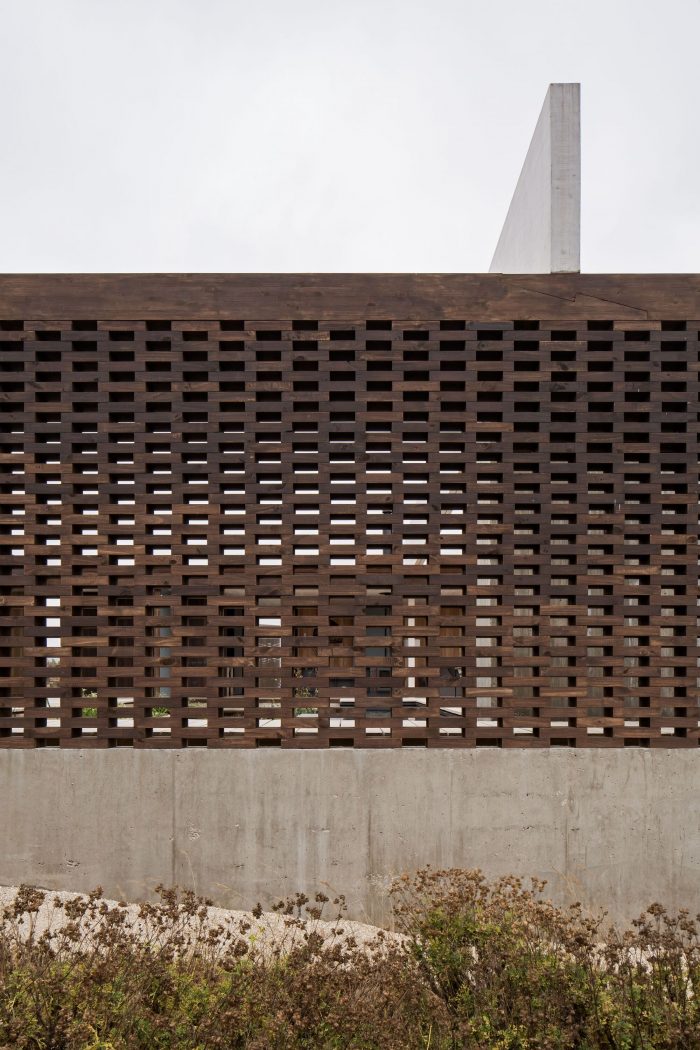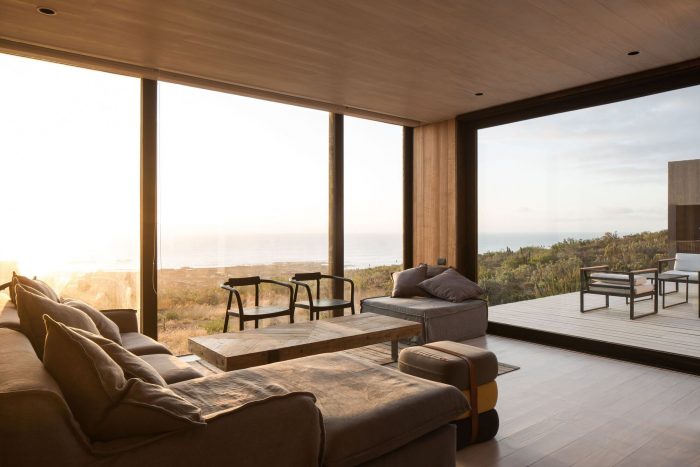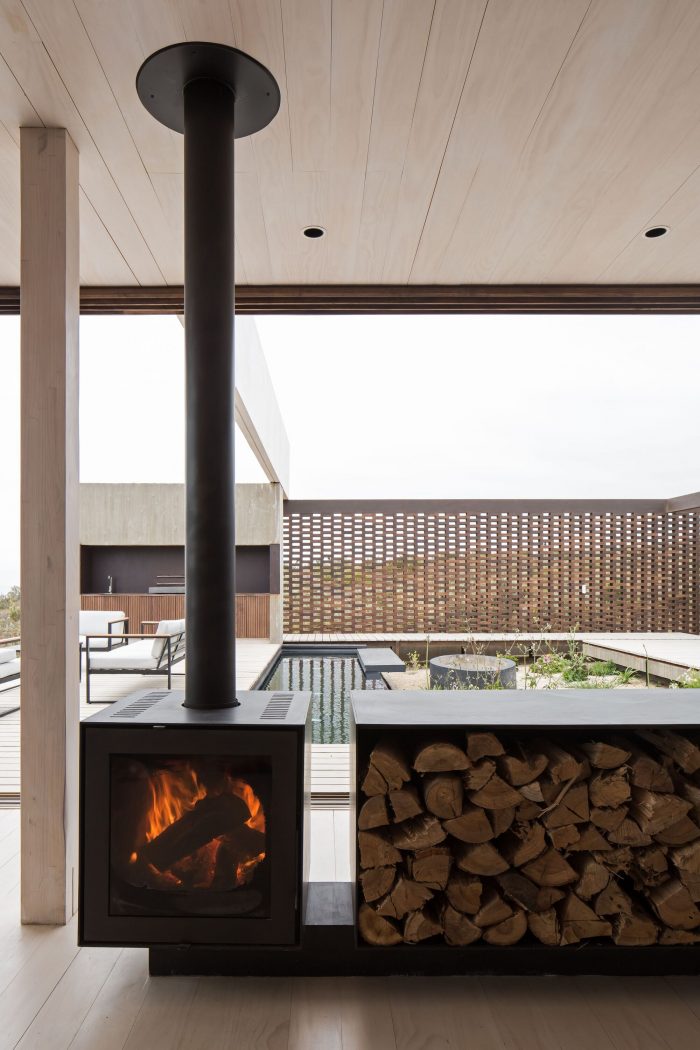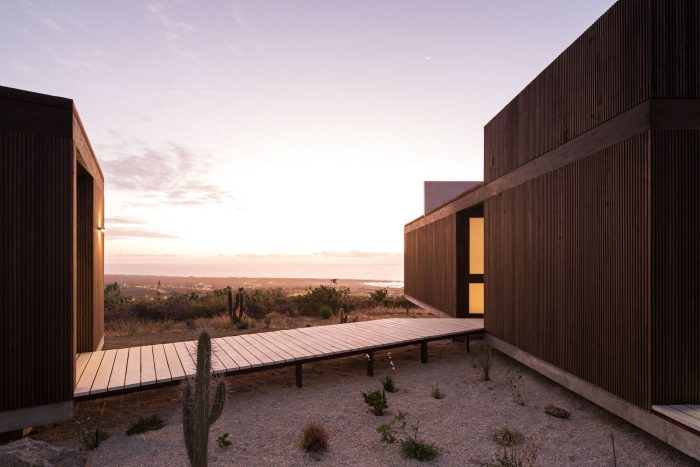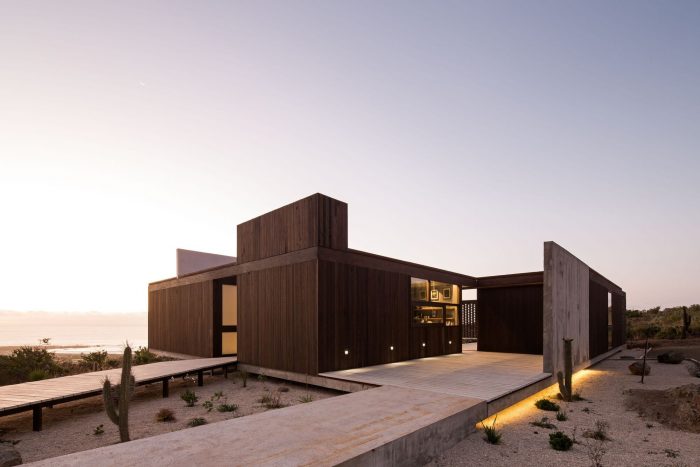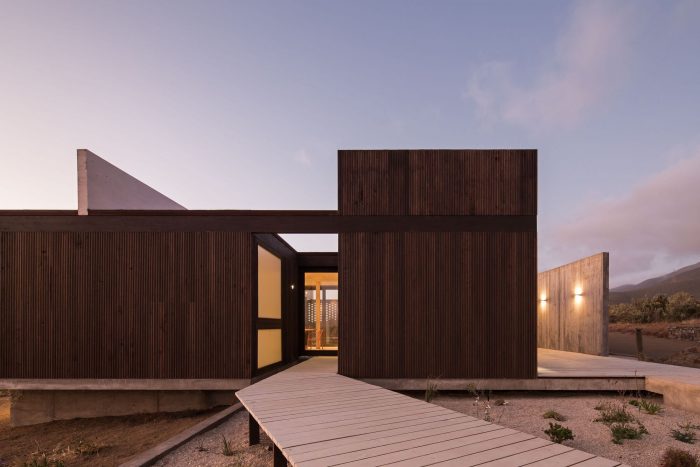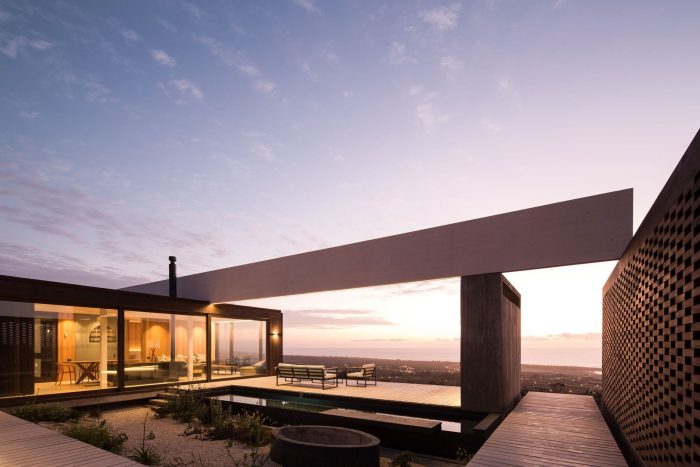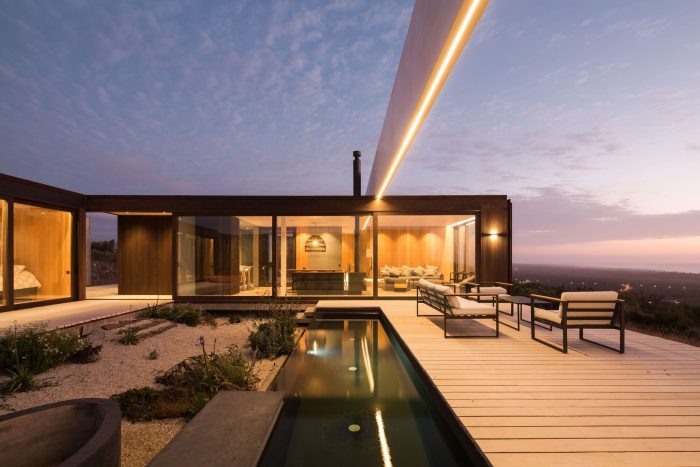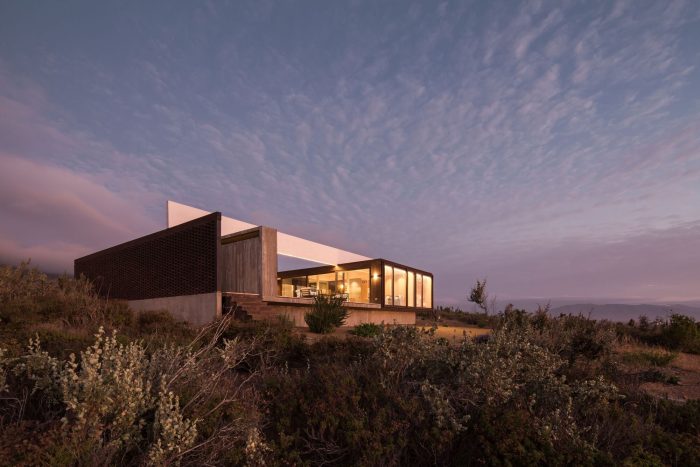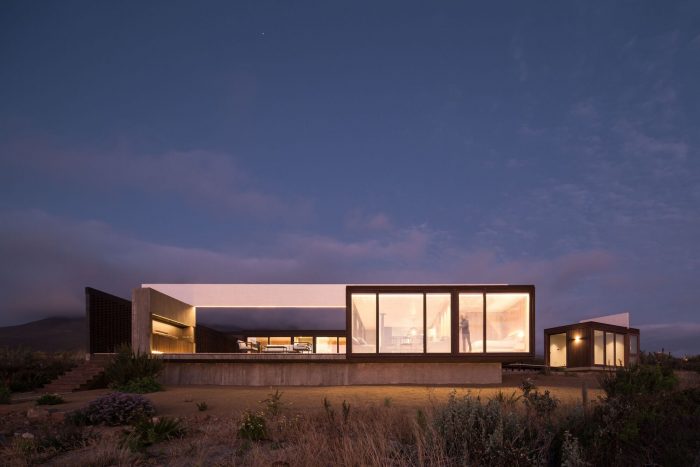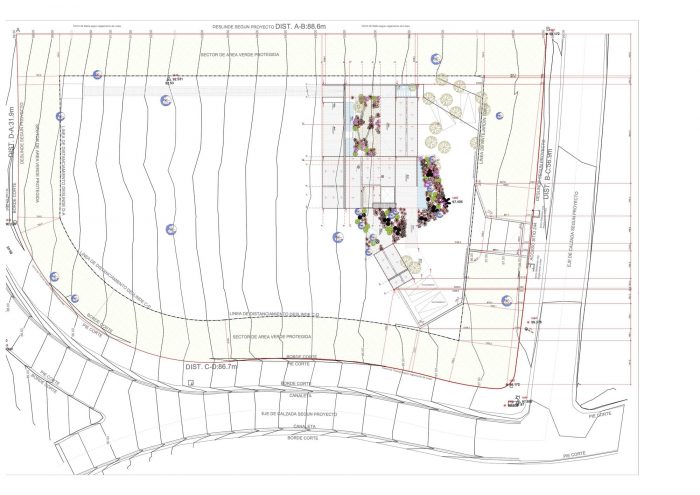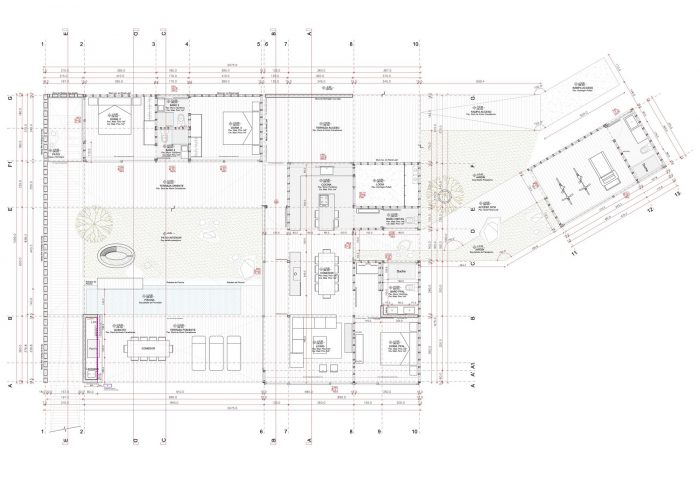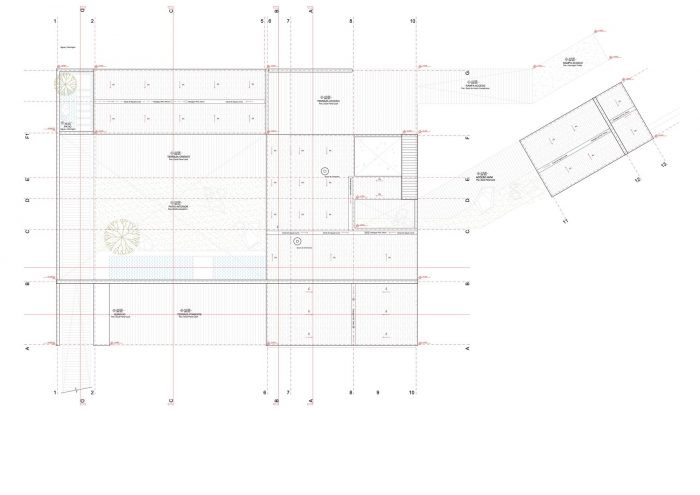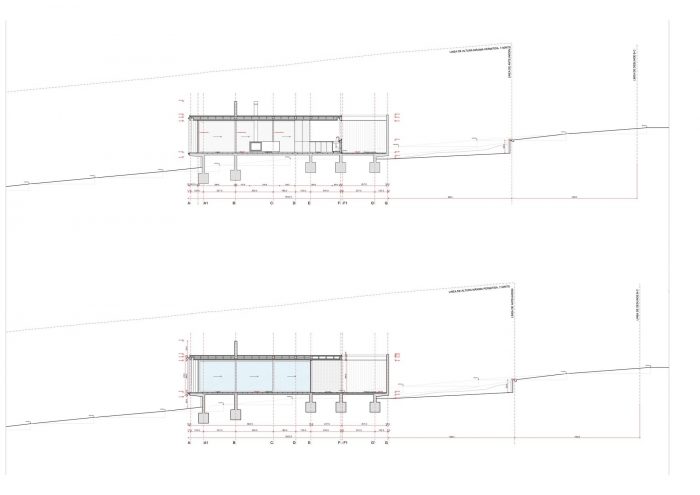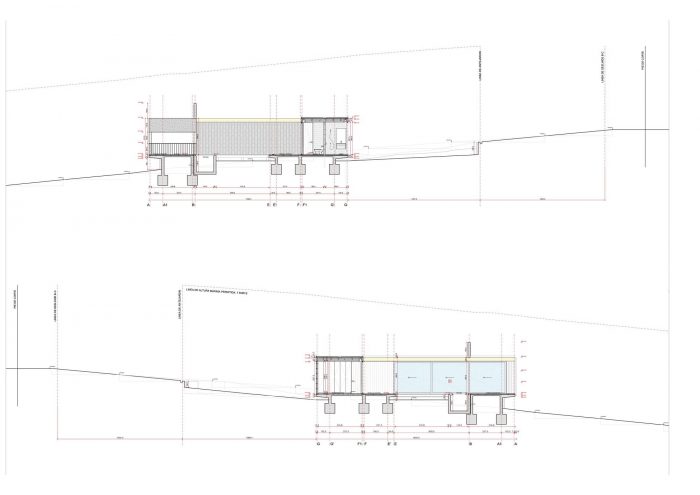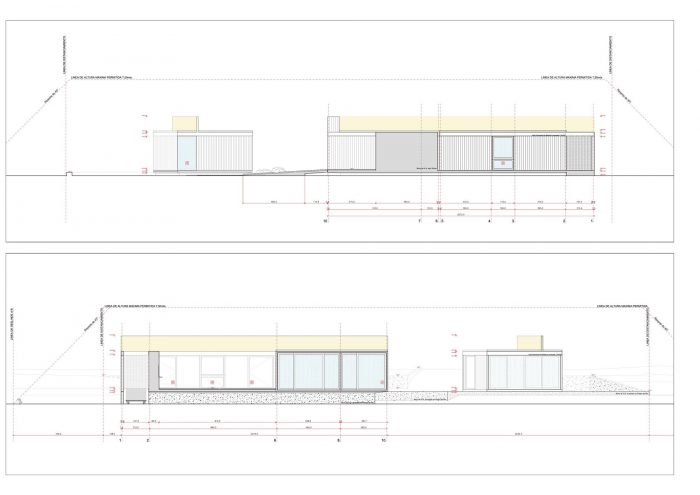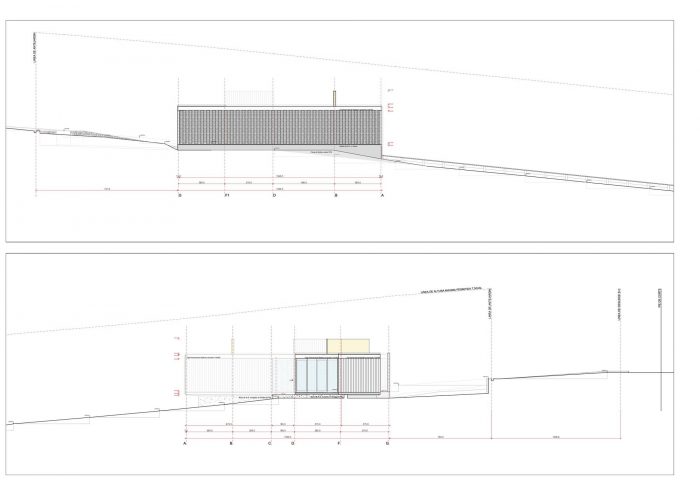这个项目试图质疑某些关于生活和我们与环境的关系的概念。它的设计框住了一段景观,将其转变为一个外部避难所,特别强调了界定建筑和自然继承之间界限的结构元素。
This project seeks to question certain notions about living and how we relate to the environment. Its design frames a segment of the landscape to transform it into an exterior refuge, placing special emphasis on the structural elements that define the limits between what is built and what is inherited by nature.
第一次接近位于智利中部北海岸的私人公寓,被丰富的野生植被和一系列切向接触的岩石群所调解,在它们之间产生了不同大小和形状的空隙。这个图像是设计的灵感,它将这些石头转化为可居住的体积和作为项目一部分的不同天井的空隙。
The first approach to the site, located in a private condo on the central north coast of Chile, was mediated by abundant wild vegetation and by a series of rock clusters that touched tangentially, generating among them voids of different sizes and shapes. This image was the inspiration for a design that transformed those stones into habitable volumes and the voids in the different patios that are part of the project.
Casa Las Vizcachas是一个成年男子的第二个家,他希望在未来这里能成为他的永久住所;这决定了一个具体的方案被分割成三个区块。最大的一个是带私人浴室的主卧室,以及综合客厅、餐厅和厨房;第二个元素是为业主女儿的卧室准备的,一个客房和一个大浴室。这两个元素都有切身的接触,但只有通过露台才能从一个地方转到另一个地方。后来,建造了一个略微转向的第三卷,以容纳一个小型健身房。
Casa Las Vizcachas is the second home of an adult man who hopes that in the future it will become his permanent residence; this determined a specific program segmented into 3 blocks. The largest one houses the master bedroom with private bathroom, as well as the integrated living room, dining room and kitchen; the second element is intended for the bedroom of the owner’s daughter a guest room and a large bathroom. Both element touch tangentially, but it is only possible to transit from one to the other through the terraces. Later, a slightly turned third volume was built to accommodate a small gym.
该通道由一个斜坡和一个小天井界定,由暴露的混凝土墙配置;当穿过这个区域时,有可能看到中央天井的前景。这个空间是整个项目的核心,具有不同的元素,有助于提高居住在外面的体验。一系列的走道将体量连接起来,并配置了不同的露台,辅以一个作为壁炉的混凝土椭圆和一个 “无尽 “的游泳池,它不是向海延伸,而是面向天井,加强了它的位置。
The access is defined by a ramp and a small patio, configured by an exposed concrete wall; when crossing this area, it is possible to see the central patio in foreshortening. This space is the core of the entire project and has different elements that help enhance the experience of inhabiting the outside. A series of walkways unite the volumes and configure different terraces, being complemented by a concrete ellipse that serves as a fireplace and an “endless” swimming pool that instead of extending towards the sea, is facing the patio, enhancing its position.
所有这些空间都由一个21米长的层压木穿过,除了支撑主体的整个屋顶结构外,它还 “框住 “了这一小部分景观。尽管从形式上看,它是一个海滩别墅,但它通过转向自身来回避这种类型。它与大海和周围的自然环境建立了视觉关系,但它并不完全向其自然环境开放;这产生了一种不同的体验,这与真正的坐在海边没有关系,但还是提供了享受海滩的可能性。所有可以在第二居所进行的活动都要在天井进行,你可以在那里享受日光浴,享受游泳池,或与朋友分享令人难以置信的日落。
All this space is crossed by a 21 m long laminated wood that, in addition to supporting the entire roof structure of the main volume, “frames” this small section of the landscape. Despite the fact that it is a beach house in formal terms, it shies away from this typology by turning towards itself. It establishes visual relationships both with the sea and with the surrounding nature, but it does not open completely to its natural environment; This generates a different experience, which is not linked to literally going to sit on the seashore but nevertheless offers the possibility of enjoying the beach. All the activities that can be carried out in a second home are subject to the patio, where you can sunbathe, enjoy the pool, or share an incredible sunset with friends.
房子建在一个从地面升起的混凝土板上。除此之外,房子是100%用层压木材设计的。所有的结构件和内墙都是在距离工地800公里的工厂里预制的,然后用卡车运输。这种策略可以节省施工时间,并将施工过程对地面的影响降到最低。主体框架是层压松木,而外部覆层是肋骨式的Raulí。
The house is built on a concrete slab that rises from the ground. Besides that, the house was designed 100% in laminated timber. All the structural elements and the interior walls were prefabricated in a factory located 800 kms away from the site and transported by truck. This strategy allowed to save time in construction and minimized the impact of the process on the ground. The main frame is in laminated pine, while the exterior cladding is in ribbed Raulí.
同时,内部装修采用Coigüe,这种选择是基于创造透明空间的意图,与环境相联系,并促进像这样的景观的典型放松,但吸引其自己的语言,远离通常的纹理和元素。将社交区和中央天井分开的窗户立面有9米长,可以完全打开,产生一个单一的大环境,其中每个区域的界限似乎都很模糊。然而,由于上梁,北墙设计成木格子和其他结构元素,空间被控制和保护。
The interiors, meanwhile, are clad in Coigüe, a choice based on the intention of creating diaphanous spaces, connected with the environment and promoting the typical relaxation of a landscape like this, but appealing to its own language that moves away from usual textures and elements. The window facade that divides the social areas with the central patio is 9m long and can be completely opened, generating a single large environment in which the limits of each area seem to blur. However, thanks to the upper beam, the north wall designed as a wooden latticework and other structural elements, the space is contained and protected.
大自然是一个礼物,也是一直存在的东西,在这种情况下,房子试图提供一个空间,在这个巨大的、无法控制的广阔的海洋中提供某种庇护的感觉。景观设计项目也遵循这一逻辑,基本上包括识别生长在该国这一地区的不同本地物种,并生成一个有效的灌溉系统,使它们变得更加强大,因为这里的风在一年中的大部分时间都是残酷的。在房子的周围,一个白色的外壳被用作景观的一部分,还有一系列从现场提取的岩石,这些岩石现在是设计的一部分,作为对第一次接近现场的回忆,通过建筑变异,直到它们成为一个庇护所。
Nature is a gift and something that always has been there and, in this scenario, the house seeks to provide a space that delivers a certain sensation of refuge in the midst of this gigantic and uncontainable expanse that is the ocean. The landscaping project also follows this logic and basically consisted of recognizing the different native species that grow in this part of the country and generating an efficient irrigation system that would allow them to become stronger as the wind here can be brutal during most time of the year. Within the perimeter of the house, a white shell was used as part of the landscape, as well as a series of rocks that were extracted from the site and that are now part of the design as a reminiscence of the first approach to the site, and that through the architecture mutated until they became a shelter.
Architects: Juan Pablo Ureta Arquitectos
Area : 1938 ft²
Year : 2021
Photographs :Nico Saieh
Manufacturers : Behr, Cutek, Osmo, COLORS Chile, COLORS Chile, FLT, Interdesign, MK, Madmass, Madmass, WoodArch
Project Manager : Juan Pablo Ureta
Builder : Jorge Pérez
Structural Engineering : Patricio Bertholet
Landscaping : MUVA
Lightning : Victoria Campino
Engineering Kit Prefabrication : Timber Ingeniería
City : Angostura
Country : Chile

